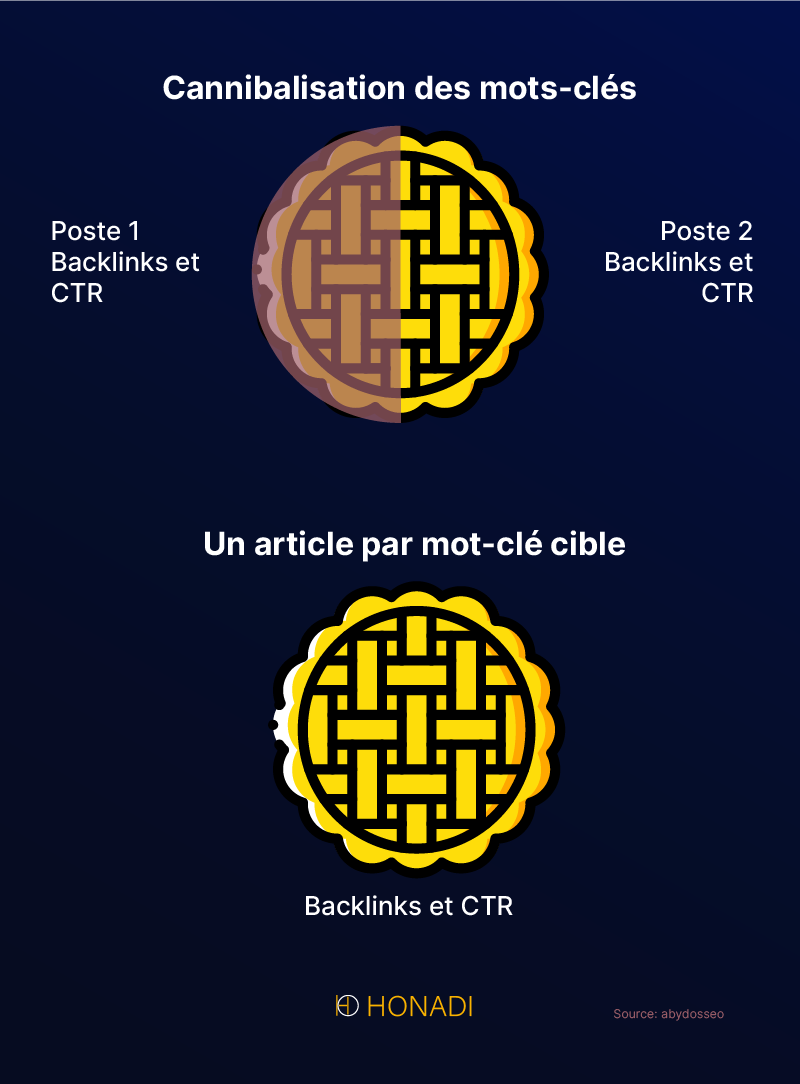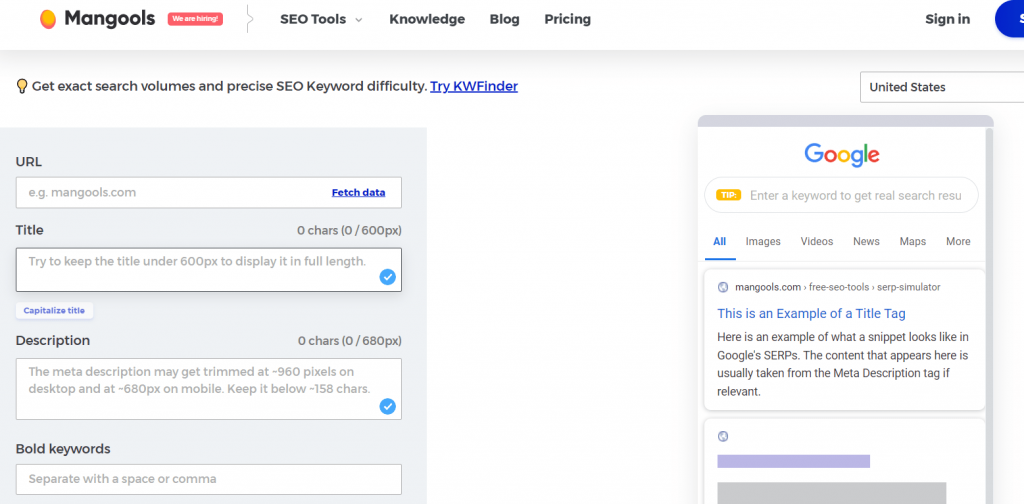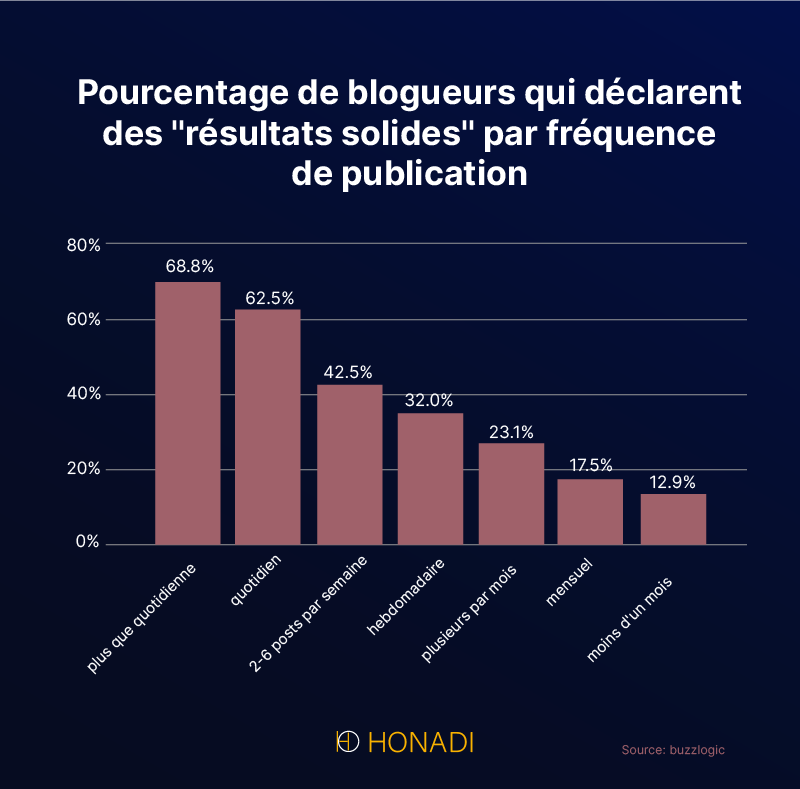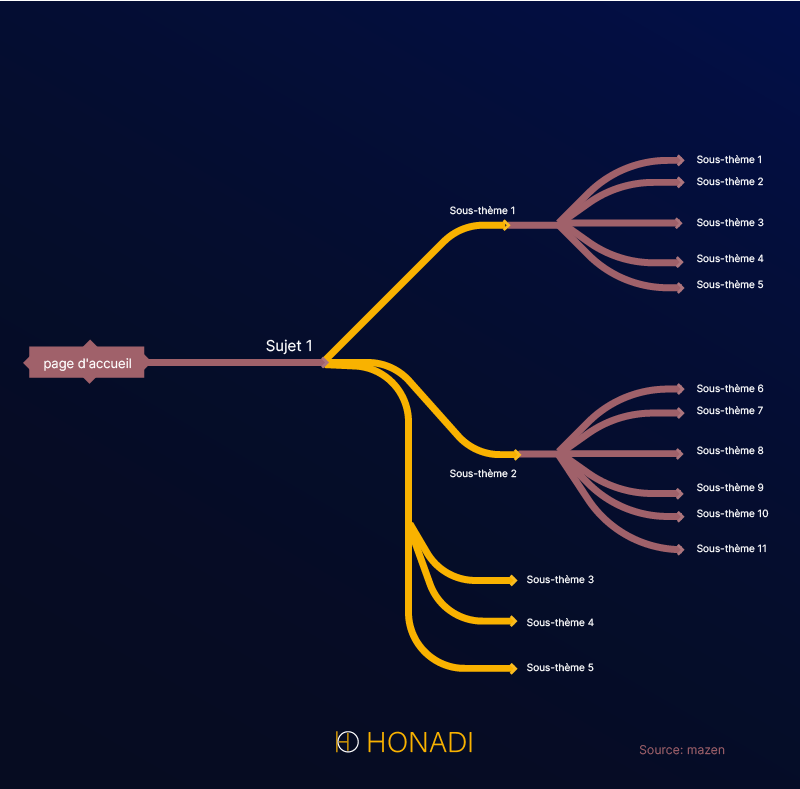“5 mistakes for which Google can ban your site tomorrow morning”. What if I started my article with a title as bold as this? ????
This may bring a few visitors to my site… for a few seconds. But people who land on this page will not hesitate to close the tab as soon as they know that my title is actually misleading.
This is how many websites shoot themselves in the foot without realizing the impact of their mistakes when it comes to traffic and SEO????
Far from being fancy, web writing is much trickier than you think and a small error in your SEO content can affect your reputation and call into question the existence of your site.
Unfortunately, very few people are interested in the mistakes to avoid when writing SEO content, even though knowing what not to do is just as interesting as knowing what to do.
To save you from the most horrible writing mistakes that can affect your site and your business, I have collected 5 of these mistakes that I will present to you in detail in this article.
So follow!
Table of Contents
Toggle5 SEO content mistakes that affect your SEO and marketing
If you make any of these 5 SEO content mistakes, your site’s SEO can suffer as can your marketing. I have some helpful ideas on how to fix this to bring your content back to life.
1. Target the same keywords across multiple pages
The best way to shoot yourself in the foot in SEO is to target the same keywords in several of your contents. If you don’t, don’t shout VICTORY yet, since this can happen inadvertently. ????
Indeed, it is possible that you lose track of the articles that you have already published on your site as well as the keywords that you have targeted in this content.
But if you republish content that targets a keyword you already ranked for, the latter will be similar to the former. The two can then compete in the SERPs.
Known as keyword cannibalization, this SEO content error occurs when you have similar keywords on several of your pages and those pages are competing for the same search intent.

Therefore, a search engine will have difficulty knowing which content should be ranked first. Sometimes it’s the web page you don’t want people to see that is ranked higher than you want.
Or, all pages using similar keywords may see their rankings decrease. However, if a page that has high conversion rates is ranked lower in the SERPs, you are not getting as much organic traffic that is more likely to convert.
In general, targeting the same keyword has negative consequences on the SEO of your site.
Instead of having a single high-authority page, the results and ranking potential are distributed across pages. In doing so, the authority of your pages is reduced compared to your competitors.
If you want to have the top scorer in the championship in your team, you might as well have a striker who scores and takes penalties as having three strikers who will compete with each other (like Mbabbé ????).
Furthermore, targeting the same keyword in several pieces of content can affect the structure of your links. On your site, links can take visitors to different pages instead of one authoritative page that provides the most value.
As for the backlinks, they will be distributed between those pages that target the same keyword. It’s like if you have two stores that are located next to each other, people can recommend one or the other.

To prevent all this from happening to you, unless you like to understand things from experience ????, you already know that you must jealously guard the keywords that you have already targeted. This will allow you to consult them regularly.
It is also interesting to know if you have already made such errors on your site. To check this, do a Google search using the “site:keyword” operator.
For example: honadi.com: web writing guide”

Google returns a list of results about your topic and it’s up to you to see if some of your older articles are ranked higher than your newer ones or those that seem relevant to you.
When this is the case, you may be experiencing keyword cannibalization, just check similar results for yourself to see why.
If you have multiple pages on your website that perform similar functions, consider consolidating the content onto a single authoritative page.
2. Writing exaggerated and irrelevant meta descriptions
If you are one of the people who just put a meta description to satisfy SEO requirements, be aware that this can be costly for your site.
By itself, a meta description is capable of enticing people to click on your link in search results or pushing them away. It’s a taste of your content and when it’s relevant, it encourages people to come and read your content.
Furthermore, when your meta description is not relevant and especially when it does not contain the keyword, Google can replace it with an extract from your content.
But concretely, what is the point of wasting your time clicking on content whose preview does not convince you when there are more than ten pieces of content that you can still consult? ????
In other words, the abundance of links in search results means that Internet users do not need to dwell on content that they consider unserious.
You must then develop a solid, convincing meta description that of course includes your keyword.
How to Write an Impactful Meta Description | Free Web Writing Training Honadi
Note that meta descriptions should not be too long and 160 characters is more than enough.
To check that your meta descriptions are within the character count standard, you can use the tool Mangools.

Be careful not to overpromise in your meta description, because even if users click on your link and your content is not adequate, they will not hesitate to bounce. From then on, your bounce rate will increase, which is harmful to your site.
3. Using unnecessary and poorly structured titles (or not enough titles)
Subdividing your content into several parts with well-written titles is a basic measure of content writing.
Indeed, titles help Google determine the theme of your content. They also make it easier for users to find the information they are looking for in your article.
Additionally, they make articles with long blocks of text easy to consume and help visitors better understand your text as a whole.
All this clearly shows that when your titles are poor, generic or poorly formatted, they will pose a real problem for your visitors to read and understand.
It’s like going to a restaurant, but the menu presented to you is very poorly organized and you can’t even decipher the names of the dishes. ????
You must understand that formatting titles (H1, H2, H3, etc.) is not meant to be fun and it must be consistent in the way you use these titles.
For example, you should not add a single H3 in your content nor two H1s in your text. Likewise, you should not mix information from one section to another. Otherwise, you will confuse your readers and even search engines.

Note that headings separate one section from another, one subsection from another and so on. This makes reading very easy, because they present information according to their importance and highlight connections in the order of succession.
That said, you should place headings sensibly within your content in the same way chapters divide a book.????
And principle:
- H1 —This is the title of your article and compared to a book, it represents the main title of the front cover.
- H2 – These headings divide your article according to the topics covered. They are similar to chapters in books. So, when your theme has several facets, each facet has its title, like our H2.
- H3 —These are the subtitles of the chapters, in particular the H2s. Each H3 is an offshoot of the H2 facet.
- H4, H5, H6 —Even though these headings are rarely used, they help break down your topic further.
As an example, let’s take a closer look at this article structure:

4. Create lots (and lots) of mediocre content
Posting content on your site regularly is beneficial and allows you to rank for multiple keywords, which can increase your site’s authority.

But that’s not a reason to publish a lot of mediocre content on your site.
In reality, low-quality content that you post on your site will not get your site rankings or traffic. And be careful, these types of content can alter the user experience on your site.
Indeed, when quality content brings traffic to your site and visitors discover your mediocre articles, they do not hesitate to leave your site.
For example, if you find a nice shirt and nice pants at the entrance to a ready-to-wear store and you say to yourself that this store surely has nice items, all you have to do is go inside for yourself. realize it.
If you actually discover lots of pretty outfits inside, you will be happy to discover a very good place to which you will certainly return again and again, or even recommend it to your friends.????
But on the contrary, if you find items that you don’t like, I bet you will immediately leave that store even when they are on sale.
This is exactly the same principle for the many poor quality content that is present on your site. They give you a bad reputation and show that you are not serious.
And no doubt, it will be very difficult for you to convert the few visitors who arrive on your site. Note that more articles on your site is not the goal, but rather exceptional quality content.
Instead of filling your blog with mediocre content, it is better to follow a pace that allows you to write documented content that really provides value to Internet users.
Stick to meeting search intent so that each of your pieces of content can rank.
And if you don’t have the time to write better content, the ideal is to delegate the writing to a team of professionals. At Honadi, we have a team of experienced writers who provide you with unique SEO content with in-depth explanations. ????
5. Create links indiscriminately
Link building is beneficial for your site from an SEO perspective. Internal links improve internal networking while outgoing links strengthen your links with other sites in your domain.
However, it is common to see content creators creating links to old sources or links with generic anchor texts like “Click here”.
Between you and me, who will take your content seriously when they cite outdated sources that are sometimes more than 8 years old.????
To create links, consider citing fresh sources that really provide readers with information. When it comes to internal linking, often try to create topically correct links.
That is to say, each link that you add to a paragraph must not only be related to the latter, but must allow readers to deepen their knowledge of the subject or access a useful resource.
In other words, you should not create links randomly, but an internal link that you place must have a purpose and strengthen your internal network.
This is the notion of the semantic cocoon, a way of organizing the contents of your site, linking them together using cleverly placed hypertext links to answer Internet users’ questions on a given topic.

In short, an Internet user who arrives on your site through the content “Which brand of laptop to choose?” can also discover other content entitled “Why the Asus brand is the most resistant”.
Likewise, it can discover other content on your site related to computer brands. ????
And above all, try to use anchor texts that effectively translate the content to which you are creating links.
Indeed, links are signals to Google and each link you make indicates that the page you are linking to is relevant to your topic and also credible.
That said, when addressing or citing a reference in your content, try to link to quality sources with strong domain authority or a source with a strong reputation.
In summary
Considering all of the above, it is very easy to make horrible mistakes when you are writing an article without even realizing it.
The SEO content errors that we have discussed in this article are very common in writing and are harmful to your site. It is therefore imperative to ensure that you no longer make these errors when writing in order to protect your site and your reputation.
With the techniques discussed in this article, you will be able to check if your site is already facing such errors in order to provide solutions as quickly as possible.
We can help you prevent these errors for future times by providing you with high-quality and well-researched content thanks to our team of professional writers. ????
All you need is us to contact us to have suitable content delivered to you to your business and able to improve the performance of your site.


